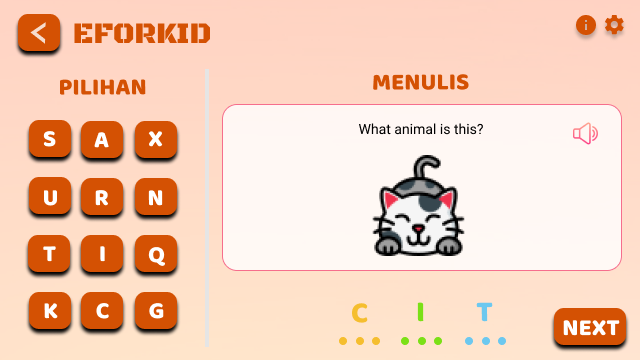EFORKID Application Prototype Design as an English Learning Media for Children
DOI:
https://doi.org/10.55732/jikdiskomvis.v7i1.503Keywords:
English, Learning Media, Prototype, UCDAbstract
English is a language that has an important position in many fields, both work, and education. However, there are still inhibiting factors in learning English like the lack of supportive learning media. In previous research on learning media, it was stated that learning media can increase students’ understanding, interest, and learning outcomes. The purpose of this research is to design an EFORKID (English for Kid) application-based android prototype so that it can help improve children's self-learning in learning English. This research method uses the Research and Development (R&D) method with survey techniques for data collection and the User-Centered Design (UCD) method in designing the prototype design. The design learning media that the author designed is in the form of low fidelity and high fidelity. The main features of this learning media application are watching, reading, listening, and testing. From the results of tests that have been carried out on target users using thinking aloud testing, it can be concluded that the EFORKID application is easy to use. We hope that this research, can help other researchers, especially those who are involved in the field of human and computer interaction, and can provide insight for readers regarding the design of learning media application prototypes.

Downloads
Published
Issue
Section
License
Copyright (c) 2022 Journal of Computer Science and Visual Communication Design

This work is licensed under a Creative Commons Attribution-ShareAlike 4.0 International License.






